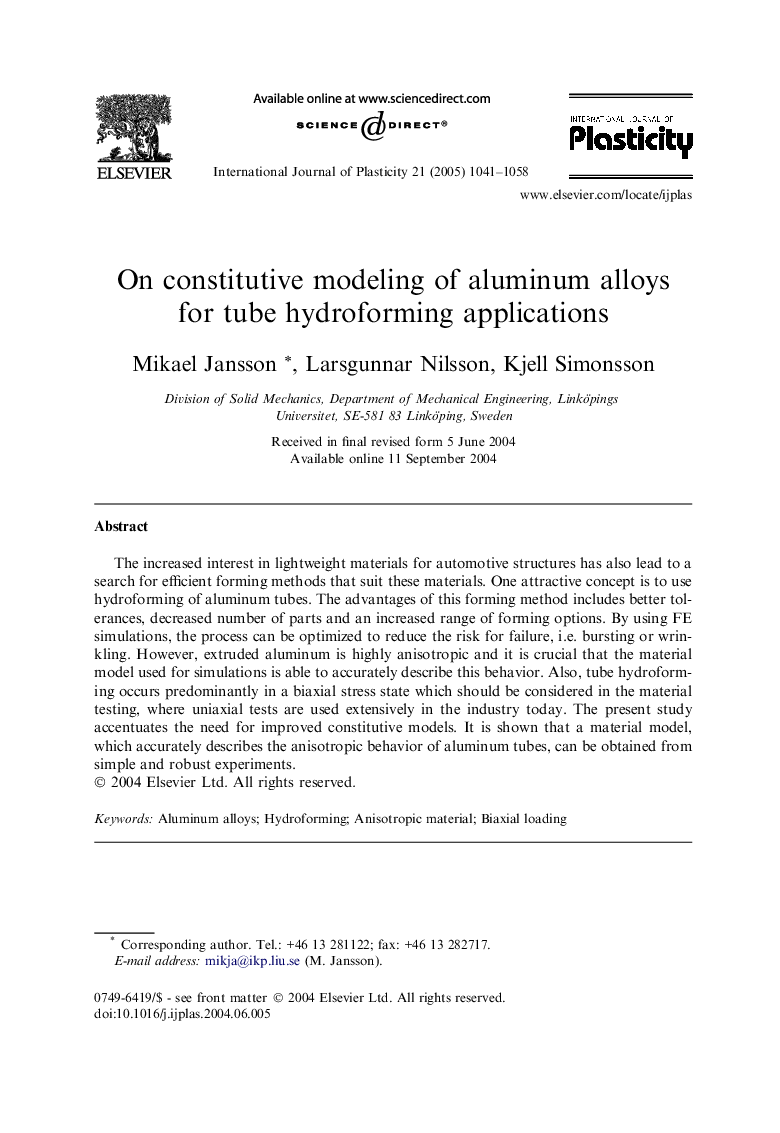| Article ID | Journal | Published Year | Pages | File Type |
|---|---|---|---|---|
| 9707232 | International Journal of Plasticity | 2005 | 18 Pages |
Abstract
The increased interest in lightweight materials for automotive structures has also lead to a search for efficient forming methods that suit these materials. One attractive concept is to use hydroforming of aluminum tubes. The advantages of this forming method includes better tolerances, decreased number of parts and an increased range of forming options. By using FE simulations, the process can be optimized to reduce the risk for failure, i.e. bursting or wrinkling. However, extruded aluminum is highly anisotropic and it is crucial that the material model used for simulations is able to accurately describe this behavior. Also, tube hydroforming occurs predominantly in a biaxial stress state which should be considered in the material testing, where uniaxial tests are used extensively in the industry today. The present study accentuates the need for improved constitutive models. It is shown that a material model, which accurately describes the anisotropic behavior of aluminum tubes, can be obtained from simple and robust experiments.
Related Topics
Physical Sciences and Engineering
Engineering
Mechanical Engineering
Authors
Mikael Jansson, Larsgunnar Nilsson, Kjell Simonsson,
